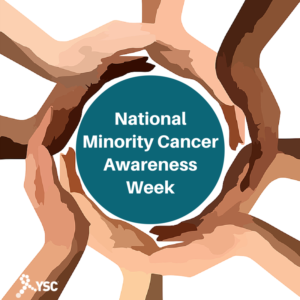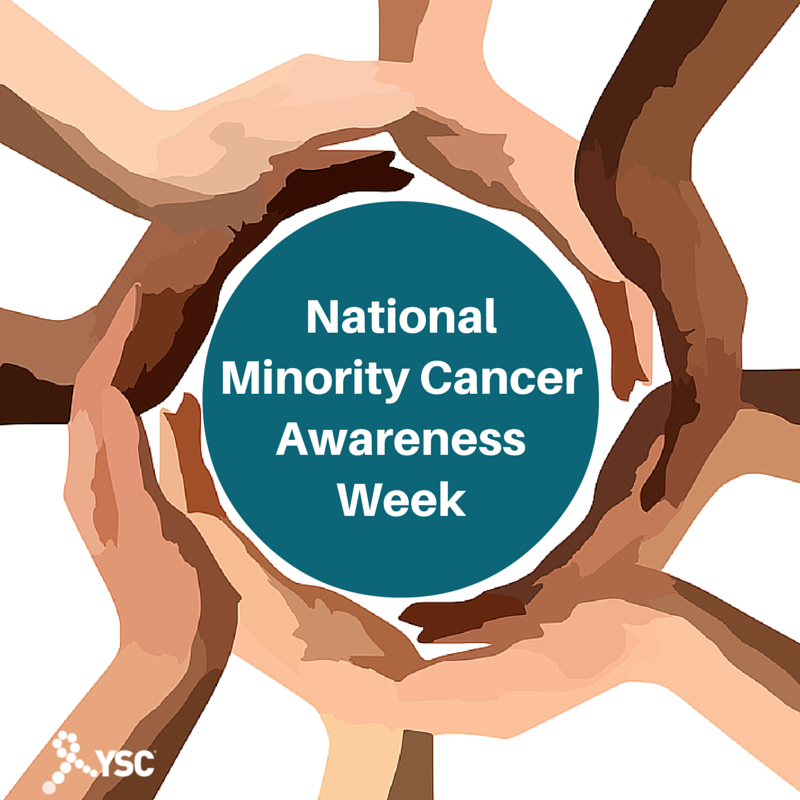
Image via youngsurvival.org
Cancer remains one of the most dangerous diseases that affects millions of people. It is projected by 2020 that the leading cause of death in the United States will transition from heart disease to cancer. In some of our diverse communities, this transition has already happened. For both Asian American and Latinx communities, cancer is the leading cause of death. Similarly, African Americans are also significantly affected by cancer with 200 deaths per 100,000 African Americans. The effects of cancer in our diverse communities become even more alarming when examining individual cancers, such as breast cancer or prostate cancer. Breast cancer is the leading cause of death among American Indian and Alaska Native women, while the rate of liver cancer in Asian Americans is eight times higher than non-Hispanic whites. In LGBT communities, the detrimental effects of cancer are worsened due to discrimination in healthcare. Cancer is a complex and dangerous disease that has impacted millions of people in our diverse communities. So why is it affecting us at a rate higher than the general population?
Although the full answer has not yet been fully understood, there are many factors that are unique to our communities that worsen the impact of cancer. Significant factors such as poverty and the lack of the culturally and linguistically appropriate services exacerbate health disparities. These factors negatively influence the environment we live in, the foods we eat, and our access to healthcare and information, worsening the effects of cancer. Living in an impoverished community often means that one is more susceptible to harmful environmental exposures such as cigarette smoke, which increases the risk for lung cancer. According to the CDC, people living in poverty smoke cigarettes for twice as many years as people with a family income three times the poverty rate.
The community you live in also impacts your food environment and the access to health care and information. The food environment is something many people overlook when examining cancer. It easy to understand that eating fruits and vegetables leads to good health but did you know that eating healthy cost more? According to a 2013 study, it cost about $1.50 more per day to eat healthy than it is to eat unhealthily. For a family of four, this equates to almost $2200 per year. In poor communities, the difficulties of eating healthy is compounded by the unavailability of healthy foods also known as food deserts. With healthier food options being expensive and unavailable, it is easier to purchase unhealthy food options such as snacks, candy and processed foods. In poor communities, unfavorable food environments lead to undesirable health outcomes. This was supported in a 2011 study, revealing that Americans who reside in the poverty dense counties were more prone to obesity, which may be a risk factor for certain types of cancers. Although it is easy to understand that eating healthy leads to good health, it is more difficult to achieve in poor communities, a reality for many of our diverse populations.
For many communities, language barriers deter people from the healthcare system. As a result, many people are not getting the care and information in preventing cancer. Similarly, LGBT people face discrimination when accessing healthcare. It is estimated that 1 in 5 transgender patients have been turned away from a healthcare provider. The lack of culturally and linguistically appropriate services creates barriers to cancer prevention, early detection services, high-quality treatment options, and access to information.
Although we many not fully understand how to resolve the high rates of cancer, we must not overlook the effects of poverty and the lack of culturally appropriate services. Both of these factors may contribute to the realities of many individuals in our diverse communities, resulting in a favorable setting for cancer to thrive.
The opinions expressed in this article are those of the author and do not necessarily reflect those of the Diverse Elders Coalition.

